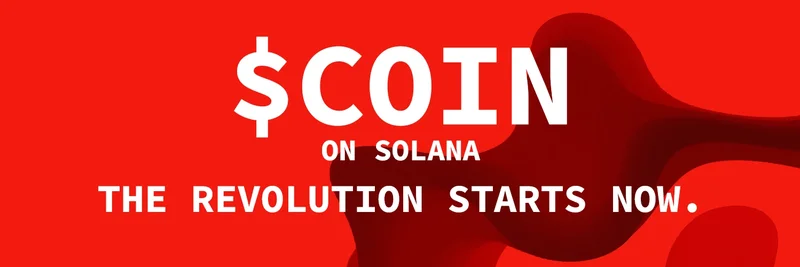If you're browsing the Solana ecosystem, you might come across the COIN token, found at address 6CzvM95SQABhdjX4taXdpXYArz5daqcin4iM7CGjNwmW. This article unpacks everything you need to know about COIN on Solana: what it is, how it works, its tokenomics, where it stands, and what you should consider before interacting with it.
Understanding Solana and SPL Tokens
Solana is a fast, layer-1 blockchain designed for decentralized apps (dApps), DeFi, NFTs, and digital assets. Its standout feature is a unique consensus combining Proof of History (PoH) and Proof of Stake (PoS), which enables high throughput (thousands of transactions per second) and extremely low fees.
Tokens created on Solana are known as SPL Tokens, similar to ERC-20s on Ethereum. They’re managed through on-chain Mint Accounts that define their supply, decimals, mint/freezing permissions, and more.
COIN Token Details
- Symbol: COIN
- Token Address:
6CzvM95SQABhdjX4taXdpXYArz5daqcin4iM7CGjNwmW - Token Standard: SPL
- Total Supply: 1,000,000,000 COIN
- Decimals: 9 (meaning you can transact in extremely small units)
- Mint Authority:
2e7yRwNFQ7Y8f8R3mX3XbXb1AQB3tscYhmAnf3we8pNq - Freeze Authority: None (tokens can’t be arbitrarily frozen)
It’s important to note: "COIN" is a generic name. There’s nothing about this token that ties it to Solana’s native currency, SOL, or any official Solana project. Anyone can mint an SPL token with any name, so always check the actual token address.
Project Background: What Do We Know?
As of now, there’s no official project website, whitepaper, or verified social media presence for this COIN token. This could mean it’s a new, under-the-radar project, something experimental, or a token with a private or niche use. In the open world of Solana, this isn’t unusual—anyone can mint tokens for just about any reason.
Solana Ecosystem Context
The Solana blockchain is home to DeFi apps, NFT projects, games, and much more. SPL tokens like COIN are typically used for things like:
- Rewards in games or platforms
- Governance voting in DAOs
- Staking incentives
- Payment within a dApp or service
- Representing digital or physical assets
With its large supply and high decimal precision, COIN could fit any of these roles.
Technical Analysis
- Minting & Supply: With a live mint authority, the creators can issue new tokens at will, which could be good for rewarding users or funding, but also raises inflation risk if mismanaged.
- Freeze Protection: No freeze authority means nobody can arbitrarily lock accounts, making it more decentralized.
- Active Use: On-chain data shows transfers between multiple wallets—so the token isn’t dormant.
- Not Exchange Listed (as of now): COIN doesn’t show up on CoinMarketCap or CoinGecko under this address, and likely isn’t on big centralized exchanges like Binance or Coinbase. You may, however, find it on Solana-based DEXs like Raydium or Orca.
Possible Use Cases for COIN
With the current info, here are some educated guesses:
- DeFi Utility Token: Used in a protocol for rewards, staking, or liquidity—like Serum or Raydium.
- Game/Metaverse Reward Token: The big supply and 9 decimals make it suitable for micro-rewards in games.
- DAO Governance: Holders could use COIN for voting rights.
- Meme/Community Token: Its generic name hints it could be a meme or grassroots token.
- Asset Representation: Less likely, but COIN could be used to represent a digital or real-world asset in some projects.
Risks and What to Watch For
- No Transparency: With no website, whitepaper, or social media, it’s hard to judge if this project is legit or just experimental.
- Inflation Risk: The mint authority can create new tokens, so the supply isn’t capped unless the mint is burned or renounced.
- No Exchange Listings: This means lower liquidity and makes it harder to value or trade your tokens.
- Volatility & Rug-Pull Risk: Unlisted tokens with unknown teams are higher risk—be cautious!
- Solana Network Outages: Solana has faced several major outages—this can disrupt trading or using COIN.
- Regulatory Uncertainty: Solana’s native token SOL and related assets have drawn the attention of regulators, which could affect SPL tokens in the future.
Tips for Users, Investors, and Developers
If you’re considering interacting with COIN:
- Verify Everything: Look for community discussions on X (formerly Twitter), Discord, or Reddit to see if any team or real project is behind this token.
- Check DEX Liquidity: Use Solana DEX aggregators like Jupiter to see if you can swap COIN and at what price.
- Monitor On-Chain Activity: Track big wallets and overall distribution on Solana Explorer.
- Don’t Invest Blindly: Be extra cautious with unverified tokens.
If you’re a developer behind COIN:
- Release a whitepaper and website.
- Engage the community via Solana events or forums.
- List the token on major aggregators to build trust and improve liquidity.
How to Track and Trade COIN Easily
For those interested in meme tokens or staying ahead of trends, specialized platforms like GMGN.AI are worth checking out. GMGN.AI provides:
- Real-time analytics, including wallet and smart money tracking
- Automated trading (with Telegram integration)
- Security checks for scams or high-fee tokens
- Cross-chain compatibility, so you can track and trade COIN alongside other meme tokens
The Bottom Line
COIN (at address 6CzvM95SQABhdjX4taXdpXYArz5daqcin4iM7CGjNwmW) is an SPL token on Solana with a big supply and high divisibility. Its role isn’t yet clear—without public documentation, it may be experimental or waiting for its debut as a utility, governance, or meme/community token. If you’re looking to trade or track COIN, use Solana DEXs and consider platforms like GMGN.AI for deeper insights and risk checks. As always in crypto: Do your own research, stay safe, and watch for new developments.
References & Useful Links:


